Popular games for platform Intellivision
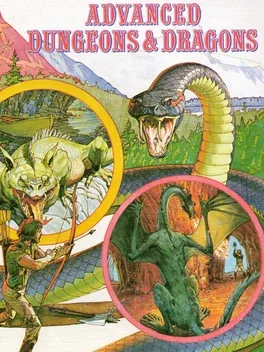
Intellivision's first ADVANCED DUNGEONS & DRAGONS title takes arrow-equipped warriors through winding caves in a quest to reach Cloudy Mountain and retrieve the Crown of Kings.
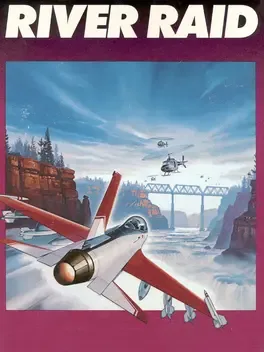
Mission: Code Name River Raid. Jet down the river. Break the enemy blockade and blast the bridges to halt enemy troop advances. Terrain: Code Name River of No Return. An ever-changing, ever-challenging waterway. Expect huge islands, narrow channels and treacherous bays crawling with enemy choppers, tankers and jets. Weaponry: Code Name StratoStrafer. Your B1 StratoWing Assault Jet has been retrofitted with sophisticated, rapid-fire guided missiles. Your craft is super-sensitive to the stick. Accelerate, slow or bank radically with only a touch. Tactics: Jet low to the river to avoid radar. Stop periodically at depots to refuel. A warning claxxon will alert you. Top speed! Best of luck!
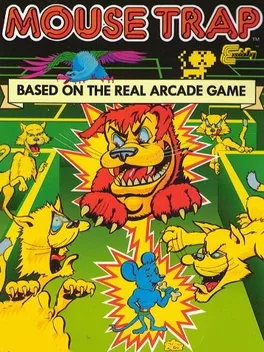
Mouse Trap is a 1981 arcade game released by Exidy, similar to Pac-Man. It was ported to three home systems by Coleco; Coleco's ColecoVision, Mattel's Intellivision, and the Atari 2600.
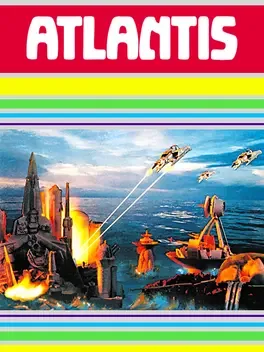
The lost city of Atlantis is under attack! Wave after wave of Gorgon vessels are approaching, each armed with weapons capable of destroying a part of the city. You are in charge of the command posts at the edges of the city and need to defend it from the invaders. The various gorgon craft will keep flying by on the screen in varying numbers and in different flight patterns. At first they fly high in the sky but then progressively lower. If an enemy makes it low enough before you destroy it, it will use it's weapons and destroy one of the buildings in Atlantis. As you progress in the game, the enemy craft will keep increasing in speed. The game ends when all remaining buildings in the city have been destroyed.
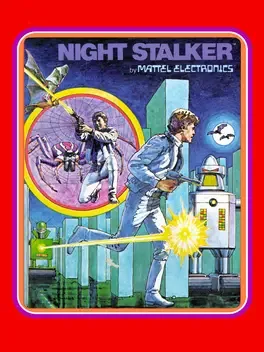
Night Stalker (released as "Dark Cavern" on Atari 2600) is a top-down maze shooter designed by Steve Montero and released for the Intellivision console in 1982. Night Stalker was ported to the Atari 2600 as Dark Cavern and released under Mattel's M Network label. Apple II and IBM PC versions were published in 1983. Robots, bats, and spiders chase you around a maze in Night Stalker, which boasts similar gameplay, if some what slower, to the arcade smash Berzerk. Players must pick up a gun that is randomly placed in the maze. The gun provides the player with a certain number of shots. Once depleted, the gun is again placed in a random part of the maze.
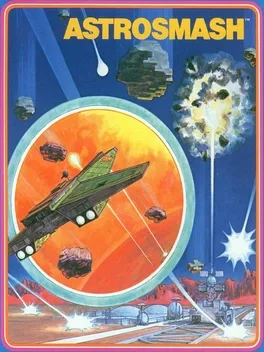
In Astrosmash you control a laser canon at the bottom of the screen; your goal is to earn as many points as possible by destroying the various incoming meteors, bombs, and other objects. Points are earned for destroying objects, while points are lost for letting them get past you. Meteors are the most common item you need to defend yourself against. They come in various sizes and colors, and some even split into two smaller meteors when shot. Mixed in with the meteors are white spinning bombs. While letting a meteor get past you will only lower your score, you have to shoot the spinners. If one gets past, you will lose a life. On the more difficult levels, ufo's and guided missiles will also appear occasionally and attempt to destroy your canon.
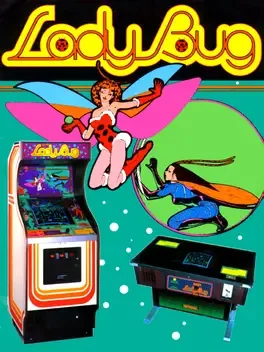
Lady Bug is an insect-themed maze chase arcade game produced by Universal Entertainment Corporation and released in 1981. Its gameplay is similar to Pac-Man, with the primary addition to the formula being gates that change the layout of the maze when used. The arcade original was relatively obscure, but the game found wider recognition and success as a launch title for the ColecoVision console.
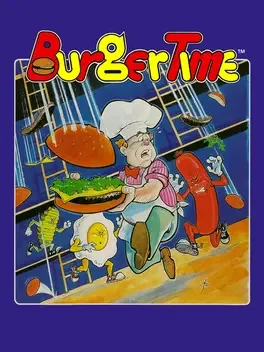
BurgerTime is a 1982 arcade game created by Data East for its DECO Cassette System. The game's original title, Hamburger, was changed to BurgerTime before its introduction to the US. The player is chef Peter Pepper, who must walk over hamburger ingredients located across a maze of platforms while avoiding pursuing characters. The game was popular in arcades. In the US, Data East USA licensed BurgerTime for distribution by Bally Midway. The Data East and Midway versions are distinguished by the manufacturer's name on the title screen and by the marquee and cabinet artworks.
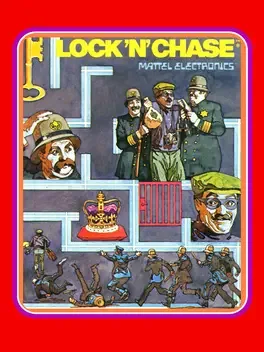
Lock 'n' Chase is a 1981 maze arcade game developed and published by Data East in Japan in 1981, and later published in North America by Taito. Lock 'n' Chase was Data East's response to Pac-Man. The game's main character is a thief. The object of the game is to enter a maze and collect all the coins and, if possible, any other treasure that may appear. The thief must then exit the maze (a vault) without being apprehended by the Super D (policemen). The thief can close doorways within the maze in order to temporarily trap the Super D and allow him to keep his distance from them. Only two doors can be closed at a time. The Super D policemen are named Stiffy, Scaredy, Smarty, and Silly.
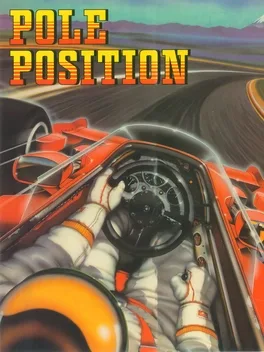
The very first racing game with the rear perspective camera and track based on real life.
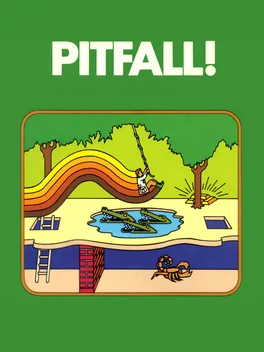
Pitfall! is a video game designed by David Crane for the Atari 2600 and released by Activision in 1982. The player controls Pitfall Harry and is tasked with collecting all the treasures in a jungle within 20 minutes while avoiding obstacles and hazards.
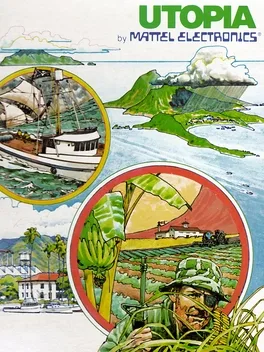
Utopia is a game played by two players on two continents. Players must build their island nation by building farms, housing, schools, hospitals, and factories and making other improvements while also competing against another player. Players are able to sabotage the other player as well, but they must also handle maintaining a fleet of PT boats to protect their fishing fleet, building forts to prevent rebellion, and dealing with the occasional hurricane. Utopia is considered by some to be the first city-building game, and an early ancestor of the real-time strategy genre.
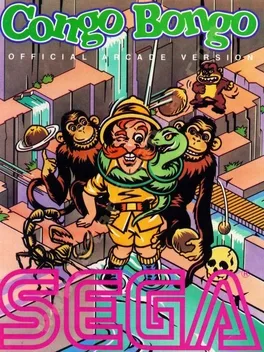
Congo Bongo is an isometric platform arcade game released by Sega in 1983. The game has come to be seen as Sega's answer to the highly successful Donkey Kong game that was released two years prior. The player takes the role of a red-nosed safari hunter who tries to catch an ape named "Bongo". The hunter seeks Bongo to exact revenge for an apparent practical joke in which Bongo set fire to the hunter's tent, giving him a literal "hotfoot". The game was named by Peter W. Gorrie who was the CFO of Sega at that time.
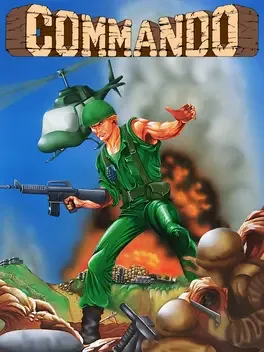
Several levels await your super-tough Commando in this arcade conversion. Armed with only a standard rifle and a few grenades you must take on hordes of enemies. Some are wandering around in the open, while others have picked out hiding places, which you must approach from certain angles. Trees, rivers and bridges create a varied combat-like terrain and must be incorporated into your thinking. Extra grenades can be collected, and will definitely be required, as they allow you to kill from distance and thus avoid some enemy shots.
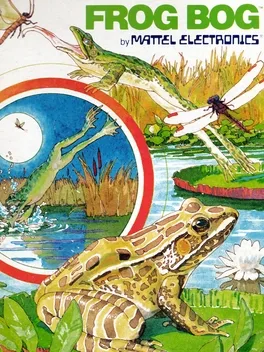
Frog Bog is a video game released by Mattel Electronics in 1982, developed by APH Technological Consulting. Players control a frog on a lily pad, competing to catch the most insects within a three-minute time limit. The challenge involves using the frog's tongue to capture flying insects while avoiding falling into the water, which would waste valuable time. The game features a dynamic day-night cycle that progressively makes insect catching more difficult as the background transitions from morning to night, adding complexity to the gameplay. The player with the most insects at the end of the time limit wins the game.
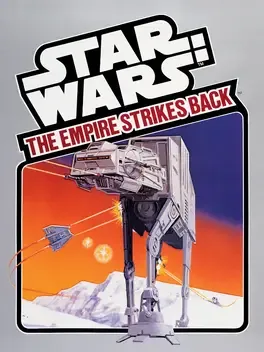
In Star Wars: The Empire Strikes Back the player takes on the role of a Rebel pilot attempting to destroy AT-ATs on Hoth.
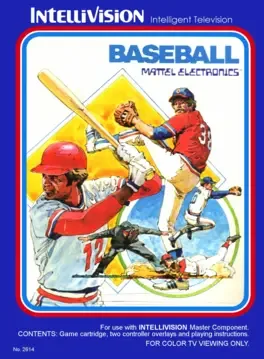
Major League Baseball is an action baseball game for two players. The game follows most professional baseball rules and allows you to control all of the players on the team. You can throw a variety of pitches (from curve balls to fast balls), steal bases, tag players out, bunt, try for a home run, and in the event of a tie the game goes into extra innings! Several difficulty levels are available which control the game speed and whether or not stealing bases is allowed.
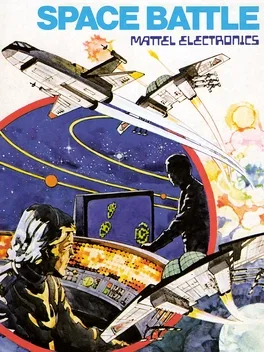
Space Battle is a one-player game that pits you against the computer. Six alien fleets of different sizes are attacking your mothership, and it's up to you to defend it using your three squadrons. Alien ships will dodge your attacks and will attack you with photon blasts.
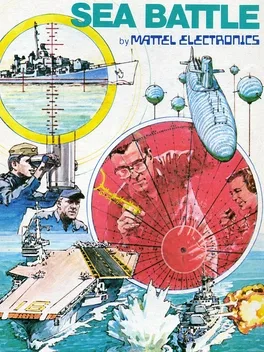
In Sea Battle, players must successfully invade the home port of their opponent while protecting their own ports from invasion. Game play takes place in an island-dotted ocean, with one player's home port at the lower-left corner of the screen and the other player's home port at the upper-right corner. Each player has access to thirteen naval vessels representing eight different ship types.[2] The player may organize these ships into smaller fleets, with a maximum of three ships per fleet and four fleets active at one time. Single-ship fleets are permitted, while larger fleets may not have two ships of the same type in one fleet. When fleets are deployed, the first ship selected as part of the fleet becomes its flagship.
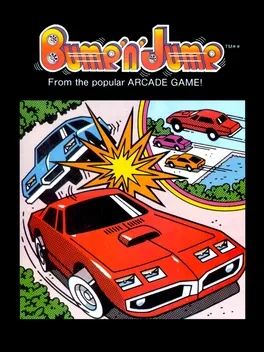
Bump 'n' Jump is an overhead-view vehicular combat game developed by Data East and originally released in Japan as "Burnin' Rubber". The arcade version was available as both a dedicated board and as part of Data East's DECO Cassette System. It was distributed in North America by Bally Midway. The goal is to drive to the end of a level while bumping enemy vehicles into the sides of the track and jumping over large obstacles such as bodies of water. The arcade game was a commercial success in Japan and North America. The game was ported to the Atari 2600, Intellivision, ColecoVision, Nintendo Entertainment System, and Sharp X1. The Famicom version of Burnin' Rubber was published as "Buggy Popper" in Japan in 1986.
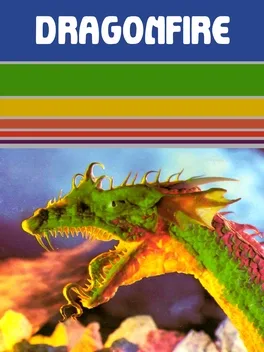
Dragons have driven the Royal Court from the Castle "O we are lost, lost" laments the King. "Without our vast treasures we cannot raise an army 'gainst these accursed dragons. Our Kingdom must now languish under lizards!" "Nay, not so, my liege!" replied the young Prince. "None knows that Castle, those many bridges and storerooms, better than I. Give me leave and I shall loot those lizards of their plunder and restore my lord to his birthright." "Brave boy," said the King, fully pleased. "But," he added darkly, "beware dread dragonfire!"
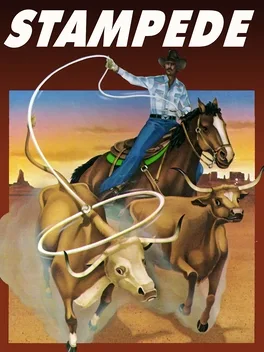
The objective of Stampede is to round up all of the cattle you encounter. To do so, the player must lasso each one in order to capture it. The player is initially only allowed to let two cattle pass; if a third one slips by, the game is over. An important caveat to this is that the player gets one extra free pass for every 1,000 points scored. So, if a player were at 2,000 points and had not yet let any cattle pass, then he or she would be allowed to let four cattle pass before the fifth one ended the game (assuming he or she did not reach 3,000). This makes it possible for an expert player to repeatedly beat the game - as after about 5,000 points or so the game essentially "resets," and the same pattern is repeated.
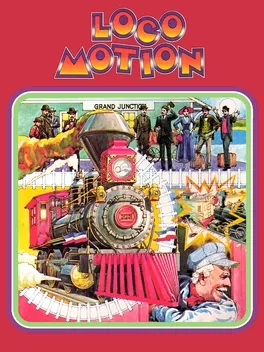
Loco-Motion is basically an updated version of a sliding block puzzle game where the player can move pieces horizontally or vertically within a frame to complete a picture. However, the presence of a constantly moving locomotive complicates matters. The player controls the playfield and the aim is to guide the locomotive around the tracks to collect the passengers waiting at the stations located around the edges of the screen. The player uses a joystick to slide a piece of the track into the vacant square. The locomotive is always moving, but the player has the option of making it move faster to get to the passengers more quickly by using a button next to the joystick. The player must avoid crashing the locomotive into the dead-end barricades (shown as a yellow 'X'), and also ensure that it does not run into the edge of the gap or a barrier at the playfield edge, either of which costs a life.
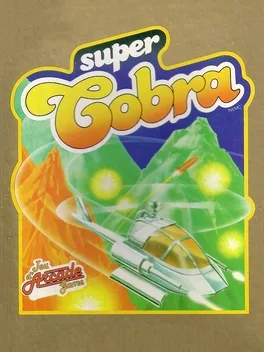
You're a helicopter gunship pilot on a daring and dangerous mission: air surveillance of enemy territory. Success depends on how far you can penetrate enemy airspace. Can you handle the pressure? Because the further you go, the more difficult the mission becomes. Show that you've got what it takes by maneuvering your chopper around craggy mountain peaks, through deep dark tunnels, and over tall city buildings. All while you face enemy tanks and missiles and weird sky-flying weapons. But you can fight back with high-flying, quick-thinking, fast-reaction moves. Good luck and good flying!